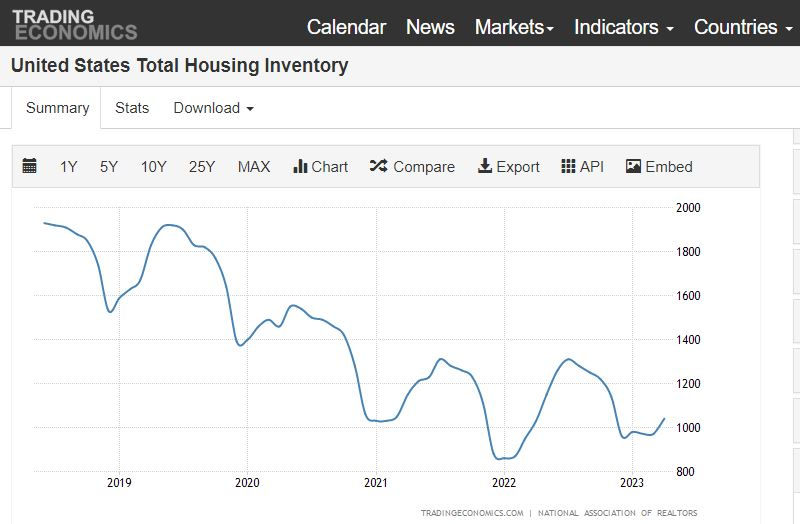
Looking back over the last three years, we may all agree that the pandemic-induced housing demand could go down in history as one of the hottest housing markets in American history. Some industry professionals claimed that for every home that was listed for sale in the United States, there were 10 people competing to buy it. In this classic textbook scenario of demand far exceeding supply, home prices increased dramatically. Unfortunately, with nearly $814 BILLION in financial relief provided to 476 MILLION households impacted by the pandemic, a lot of cash has infiltrated our economy.
As the Federal Reserve sits on its 10th straight fed rate hike, we all wonder how much those hikes actually helped the housing market. “Federal Reserve won’t likely raise rates next week but maybe next month”, -Christopher Rugaber with AP
Considering that the national average mortgage rate has increased nearly 200% since 2020, one would expect housing demand to have cooled off by now. A significant variable that the Fed may not have given enough consideration to however, is the behavior of the millions who currently own real estate with historic low mortgage rates, i.e. 30-yr fixed 2.25%. Who in their right mind would feel excited to lose that low of an interest rate, only to fall in ranks with the other millions of home-shoppers to spend exponentially more per square foot and at an interest rate that could be twice as high (or higher) than what they have now?
This, herein lies the challenge. In a typical market, when mortgage interest rates go up, the demand for housing goes down. When the demand for housing goes down, it takes longer for a home to sell, so sellers are more willing to negotiate. This is known as a buyers market.

We’re not in a typical market, folks. While the average 30-year rate in 2021 was 2.96%, today’s national average is 7.06% according to bankrate.com.

Considering that mortgage rates are at a near 40-year high, why is housing demand not going down? Think of housing inventory as the supply and the number of people who are home shopping as the demand.

With nearly two million homes listed for sale leading up to 2020, we are certainly feeling the pinch these days with roughly half of the home availability. Couple the available inventory being cut in half with roughly the same number of people wanting to buy and you have a relative spike in demand, which can result in increased home prices.

The number of available homes for sale has drastically decreased over the last five years, while the number of people looking for a home has held relatively steady over the last five years.
What does this mean? Why is inventory so low? People are holding onto their homes!
What will it take for these people to sell their homes?
Some people are holding onto their homes because it is almost impossible to buy another home for the same cost (per square foot) and still get a low interest rate. For as long as they aren’t required to move, i.e. work, family, etc…, they will most likely hold steady and not sell. This is why housing inventory is low.
What will happen when mortgage rates drop?
Consider how high demand is currently with respect to the number of homes available for sale. If mortgage rates drop significantly, we can expect the number of mortgage applications to increase even more, driving demand for housing up even further.
For a period of time (until homeowners decide to sell and increase housing inventory) given that lower mortgage rates will drive demand up even more, it’s likely that home prices will “go through the roof” as Barbara Corcoran puts it.
With the Fed kicking off its June meeting (June 13 and June 14), investors anticipate a 71% probability that the Fed will finally put a pause on the 10 consecutive rate hike trend. Two primary inflation indicators will carry heavy weight as the Fed considers the next move. The May Consumer Price Index and Producer Price Index reports will be front and center for discussion as the Fed contemplates skipping a hike in June.
If these key indicators confirm inflation cooling, then we can expect the market to respond and rates should cool down as well. Industry analysts are already forecasting the Fed to hike the rate in July, however. Why?
Back to the current U.S. housing demand vs. housing inventory (supply) dilemma. Demand currently far exceeds supply. With a significant drop in rates during a short period of time, demand will rise to the point of nearly exterminating supply, unless home prices rise fast enough to satisfy the demand that can afford them. Then we will be even worse off than we are currently.
Massaging economic variables in a way that slowly closes the gap between supply and demand over time is the best approach to preventing an unstable housing boom or housing crisis. Continuing to manage the Fed rate is one avenue to do this. That may be partly why we will see another rate hike in July. Not doing this could spark another housing boom, but will very little, if any foundation.
So if you’re in the market for a home and you’re debating on buying now with a higher rate or buying later with a higher price, consider buying now with a higher rate and lower price and refinancing later to a lower rate. This way, you get the lower price now and the lower rate later; the best of both worlds.
Like what you’re reading? Check out my other articles at TheHomeLoanHub.com
Terry Roberts Sr. Mortgage Banker NMLS 397987 Bell Bank Mortgage Equal Housing Lender
Terry Roberts is a U.S. Marine Corps Veteran and specializes in residential mortgages, including new construction, conventional, FHA, and VA home loans. He has helped more than 10,000 clients start the home buying process across America.


Comments